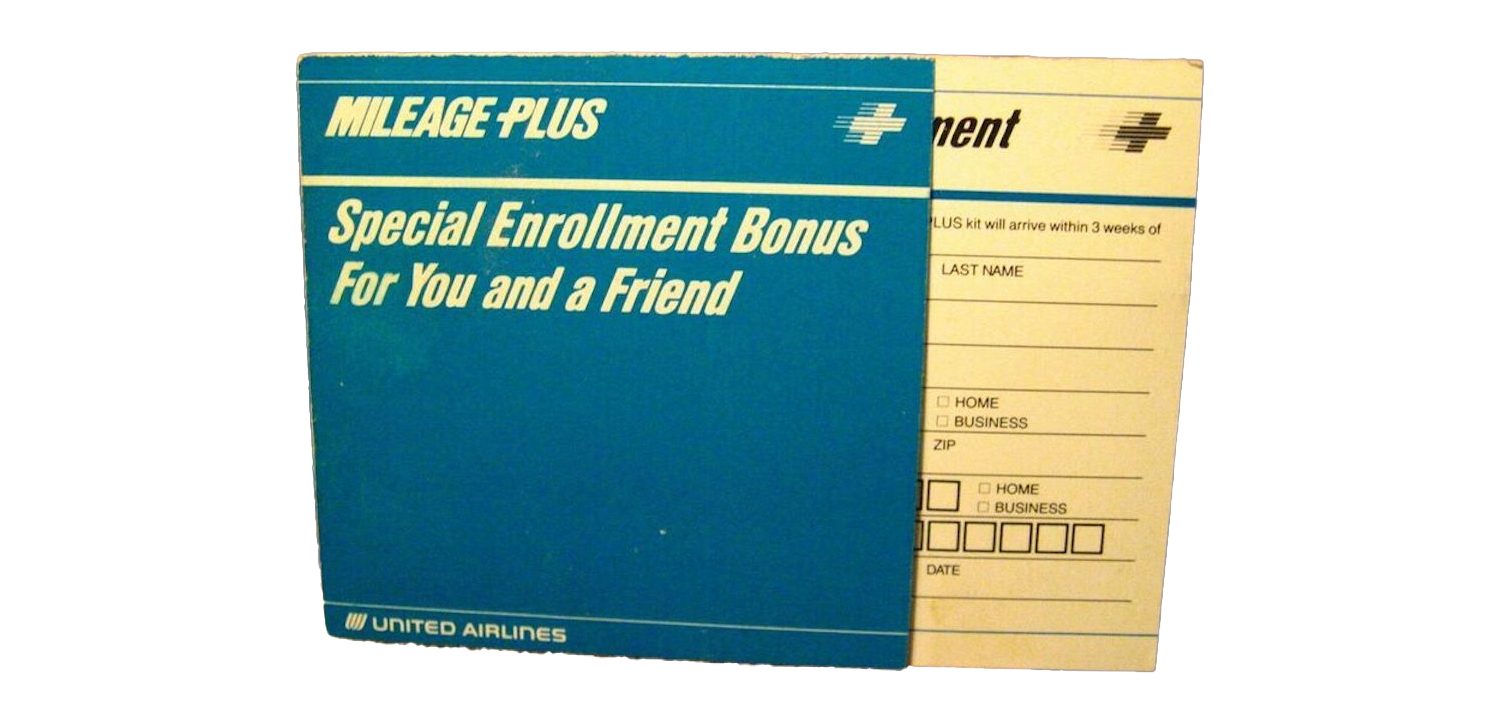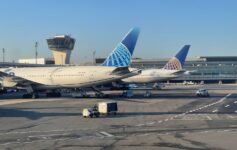United Airlines is celebrating the 40th anniversary of its MileagePlus loyalty program. I’ve been a member for the majority of that time and the program has benefited me tremendously over the years. The tens of thousands of dollars in discretionary spending I have directed to United has benefited the airline. As United looks ahead to the next 40 years, how can it secure a bright and prosperous future?
Five Ways United Airlines Can Secure The Next 40 Years Of MileagePlus
MileagePlus and United Airlines were not always the same company, though their fortunes were closely related. Now under the same roof, we cannot talk about MileagePlus without first talking about United. CEO Scott Kirby has promised that United will emerge from the pandemic as a stronger, better carrier.
This goal is foundational to creating a stronger and better MileagePlus program. Without reliable operations, friendly employees, the dispensation of empathy, and a value proposition that makes sense, people will not be loyal to United. While there are many loyal to MileagePlus and not United, the vast majority pledge allegiance to both, at least practically in terms of travel patterns.
#1: Offer A Truly Compelling Credit Card That Outshines Flexible Currency Alternatives
We’ve seen some lucrative card offers recently for MileagePlus co-branded credit cards with Chase. I’m not interested, though. There isn’t the trust left for me to keep a nest egg of miles in my United account. Instead, I insist upon placing spending on cards which earn flexible points like American Express Membership Rewards or Chase Ultimate Rewards (or lately, more cashback categories).
I’m hardly alone and that is a problem United must reckon with. While the market is not fully saturated (there are still millions who have not signed up for airline credit cards who are eligible), I know of far too many friends, family members, and clients who are cutting up their cards. It’s not because they are ending their relationship with MileagePlus; it is because it just does not make sense to put spending on a United card if you are a savvy traveler.
And let’s be clear: it’s all about the credit card. The customer that matters most is not you or me, but Chase Bank. I mention that to note that perhaps our only leverage, as concerned customers, going forward is to place pressure on Chase.
So my first suggestion would be to continue to work with Chase to create a compelling card product that actually is more valuable than the Chase Sapphire Preferred or Reserve to savvy United flyers. And I don’t just mean a card to hold, like the United Club card because it is cheaper than annual United Club membership, but a card to actually put spending on.
#2 Bring Back Award Charts, Keep Prices Reasonable
It’s time to bring back award charts. They matter for two main reasons: first, they hold an airline accountable. Second, they help people to plan and thereby incentivize them to keep their eye on the prize.
The only reason an airline takes away award charts is if it wants to get away with raising redemption prices indiscriminately and without providing notice.
I’m tempted here, of course, to gripe about the recent devaluations. Increasing the prices of partner awards during the pandemic shows a certain contempt for the customer. But that is not nearly as problematic as the lack of transparency in not publishing award charts any longer.
A customer who has saved for years for a dream vacation may find prices rise 20-30%, sometimes more, overnight. What do you think that does for loyalty? How do you think that passenger feels about United? Hint: it makes them HATE United.
There’s also a technological issue. In today’s world of MileagePlus, you pay what the computer says you’ll pay. The problem is that computers are designed by humans, humans are flawed, and dealing with a problem (most often with United’s Excursionist Perk) takes hours of time. Having a clearly-defined award chart could save hours of back-and-forth when systems do not work as they should. Sadly, that is often the case at United.
So award charts encourage transparency, promote accountability, and spur demand by helping passengers save toward a meaningful goal.
And as part of that award chart transparency, United should keep all prices reasonable, but particularly partner redemption prices. United pays a set cost to partner carriers for access to award space and it is actually very low (you’d be shocked at how little United pays for access to business and first class cabins on other carriers).
Already, United charges on the higher end for redemptions compared to Star Alliance partners like Aeroplan or LifeMiles. Inflating the cost of premium awards turns away valuable customers who are willing to pour in discretionary spending to Untied Airlines, but want to be able to use miles to travel the world in forward cabins. I fit into that category…and it is becoming increasingly difficult to pay almost as much for a one-way ticket on United to Africa as I do for a round-trip ticket on ANA (even on United’s own metal!).
#3 Maintain Meaningful Elite Benefits For Flying United
The current elite structure (five tiers if you count Global Services) works well overall. Access to Priority check-in, security, and boarding is important. Lounge access is important for higher tier elites. Extra legroom economy class seats are vital and upgrades are a nice perk.
Here, it is essential that United keeps these elite benefits intact. As I factor whether to fly United or another carrier, I note that United gives me access to seats with an extra five inches of legroom and a complimentary snack if I am flying behind the curtain. If flying internationally, I have lounge access. I can always check bags and am invited to board ahead of other passengers, thus assuring access to overhead bin space. I am upgraded more often than not as a 1K flyer.
These are fundamentals, but they merit our spotlight: there can be no cutbacks here.
#4 Keep The MillionMiler Program Intact
United would be wise to keep its MillionMiler intact and unchanged. I’m a United MillionMiler for life, on my way to two million miles, and no one can take that away. But United can devalue my lifetime status at anytime. And while it may be tempting to start MillionMilers at lifetime silver instead of gold or take away the spousal benefit, it’s the MillionMiler program and the thought of realistically hitting 3-4 million lifetime flight miles over the course of my career and retirement that often makes me choose United metal over Star Alliance competitors.
United lost tremendous amounts of trust when it devalued its MillionMiler program after the Continental merger, a total bait-and-switch. This time, it would be wise not to repeat that mistake and continue to recognize what a driving factor lifetime status is in pushing business.
#5 Always Be Honest About Devaluations
Devaluations are going to happen. They always have and they always will. And that’s okay. Those of us in the miles and points game expect this. But it is absolutely unacceptable to characterize devaluations as beneficial to customers.
I’ll give you an example. In 2019, United boasted for months that it would eliminate its $75 close-in processing fee for award travel booked within 21 days of travel. It did eliminate the cash fee, but added a surcharge of 3,500 miles for all close-in bookings instead. And while MileagePlus elites were exempt from the $75 close-in processing fee, no one was exempt from the new close-in processing fee that was simply charged in mileage, not dollars.
This was an insult to all customers but particularly MileagePlus elite members. This does not build loyalty. Instead, it alienates customers and promotes disloyalty. I’m still angry about it a year and a half later…
United would do well to be honest. Characterize devaluations as devaluations and people will shake their heads for a day, but respect you. But play Orwellian games and you’ll simply lose credibility.
CONCLUSION
United MileagePlus has been my primary loyalty program for all of my flying career. I am fiercely loyal and have rewarded United with tens of thousands of dollars of my own money and literally hundreds of thousands of dollars in tickets booked by my consulting agency on United.
United how has a chance to distinguish itself from its peers in a positive way as it embarks upon the next 40 years. I hope that it will do so and when it does, will find great success in offering a loyalty program that is truly mutually-beneficial.





These days loyalty is certainly overrated, and it doesn’t seem to make much difference given the value of benefits being offered by United or any airline. Being a non-hub flier myself, my only real options are Delta and United. While Delta gets a bunch of crap for its subpar award program, I still find that domestic awards are cheaper on DL than UA. And you might think internationally United holds more weight, but I again find that LifeMiles and Aeroplan offer far more attractive rates for business class redemptions with good award availability. Why accrue 20% more miles for the same redemption when you can simply use your bank points to transfer over? Ultimately, I find MileagePlus uncompetitive for both types of redemptions and don’t show any loyalty towards United despite being Silver for several years from their relationship with Marriott.
@matthew I hope the correct people read this at UA. This approach will set the program above the other two legacy airlines. You said something that hit home “…it is becoming increasingly difficult to pay almost as much for a one-way ticket on United to Africa as I do for a round-trip ticket on ANA” — It’s not difficult. It’s not even a question anymore for me. I just used my Amex membership points to make a roundtrip redemption on UA metal to Europe with ANA’s program. It cost me significantly less miles and earning those miles with the Amex gold was super easy. I recently closed out my UA chase branded card too as the program is no longer competitive with the flexible currencies. Chase needs to desperately revamp their Saphire preferred card as it’s getting zero spending with me (like the UA card prior to closing it). A program I once used to frequently fly to the Far East (spending many thousands with UA) is no longer even a consideration. Based on history, UA will not learn. They will not read this nor listen to the customers. They will run this program right into the ground with further dishonesty and terrible changes that drives a wedge between themselves and customer loyalty. I hope I’m wrong but I see nothing that would indicate otherwise. And regarding lifetime millionmiler, Matthew, you’re safe “unless we change our mind.”
I am still miffed about the snack box. The United website still claims 1Ks get a snack box in economy, and not only is that still not the case but we get dirty looks for even mentioning it. It’s such a simple 1K benefit you would think they could get right and that generates significant brand loyalty, and yet they have failed at getting it right during the pandemic. If they can’t sort out something as simple as managing expectations on the snack box, I have less confidence in them managing other aspects of the MileagePlus experience.
I agree. But as more routes re-introduce BOB snacks and alcohol, this problem should be resolved.
I have a different take on mileage redemptions. I’d rather the miles be a fixed value. Maybe 1.25 miles = 1 cent. That way, we can pay with miles instead of redeeming for award flights. DL has this option, which allows those tickets to receive elite qualification miles, since they are paid tickets.
Handing out PQP on tickets paid for via miles would be a tremendous benefit. It would also place a flor on the value of the miles.
Matthew,
Many good points. Thanks for this piece. I, too, have been in MP since the beginning. I particularly agree with your point about the million mile program. I hit that threshold some years ago and it has been of continuing value to me and I have continued to spend on United as a result. I’m currently on a trip to Thailand which was to have been on UA, but with all the upheaval, they cancelled my itinerary and I booked with EVA (TPE had just reopened for transit). My million mile status was a significant benefit to me in that booking, and I enjoy a lot of value across Asia with the *A partners.
And finally, speaking of aggregate spend: My late grandmother, a lifetime non-driver, when asked if she owned a car would reply, “No, but I have purchased several of them for the taxi company”
Very well said. I fervently hope that some bigwigs at United read this and have an epiphany that treating valued customers as, well, loyal customers is mutually beneficial although I’m doubtful that United will make the badly needed changes since by all appearances Scott Kirby simply doesn’t understand loyalty except perhaps in the abstract.
While most of the issues you raise are absolutely correct, I do disagree with you on number 1. I imagine that Chase could craft a card that would provide a lot of value but why do so when United is continually intent on removing value? Things like zero notice devaluations lower the value of the miles earned on a Chase United card but Chase is still stuck paying the same price for the devalued asset because United chose to burn them and the customer in one fell swoop. Showing such intense bad faith with both your customers and your partners does nothing to make them more willing to take your word on faith in the future.
I do have one idea that might also fit in your list: Make the award chart (as you said, bring it back first) price for your flights depend on when miles were earned rather than when they were used. That way if someone earns a million miles this year they can be assured that the reward price to use those particular miles will never increase. United could make it so that the oldest miles always got used first. The technology to do this is old school at this point and United would spark a flurry of mile earning for a long time to come while they would get the cash from Chase or the flyer now. There would of course be significant breakage as well so United would win there too.
Your idea is a good one, though perhaps some sort of sunset clause (3-5 years) might have a more reasonable shot at becoming a reality.
Good suggestions all. However I think they will quickly return to greedy like a pig next year with the loyalty program esp. as business travel starts to pick up (even if it takes years to fully recover)
Just a longing for the good old days. They’re gone, for good.
All excellent suggestions. However, I doubt that United will give them serious consideration. My guess they have all the minions working on how to further densify their planes–10 across on 787/A350, 11 across on 777, even thinner seats, more rows in all planes, and so forth.